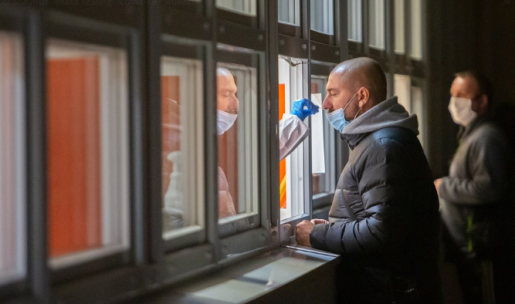Navigating COVID-19 in the workplace: Best practices to guide future decision-making
Ensuring safety during the COVID-19 pandemic has been crucial over the past three years due to the varying waves of COVID-19 variants. Consequently, public policy measures have been adjusted to account for ever-changing and regional circumstances.
One of the most significant challenges in public health has been determining the appropriate safety measures to adopt and when to adjust them based on the latest data. To fill this gap, our team at the Institute for Clinical and Translational Research (ICTR) at Baylor created the COVID-19 Outbreak Simulator. Our objective was to accurately measure and model viral-specific parameters of SARS-CoV-2 and identify the most effective, situation-specific COVID-19 safety measures using quantitative methods.
In 2022, our team did a thorough investigation to find ways to reduce the risk of SARS-CoV-2 in the workplace. Our goal was to help businesses, policy makers and any general audience understand how small changes in viral parameters can or should direct an organization’s decision making (i.e. whether to scale up or safely wind down their workplace health safety measures).
We conducted around 130,000 simulation tests using the COVID-19 Outbreak Simulator. We examined virus spread in hypothetical working environments with COVID-19 infections from the community using variant-specific viral parameters for the original through the omicron variants to model viral spread. Specifically, we modeled two general work team scenarios: 60 members interacting together for an 8-week period (480 person-weeks) and an office of 200 individuals working together for 24 weeks (4800 person-weeks).
In our simulations, we tested the rates of workplace-acquired infections using different strategies, such as isolation methods, community infection rates, testing scales and methods, non-pharmaceutical interventions, variant predominance, vaccination coverages and vaccination efficacies. We found that even with higher community infection rates, workplaces with high vaccination rates were effective in preventing workplace-acquired infections.
These efforts identified appropriate thresholds for relaxing masking and testing strategies. These thresholds varied significantly depending on the local variant’s predominance. For instance, we found that workplaces with 100% vaccination coverage of a 65% effective vaccine could prevent workplace-acquired infections at community infection rates of 60 for the original strain, 30 for the delta variant and one for the omicron variant for 480 person-weeks. There were also possible scenarios in which neither masking nor testing were required to operate safely in the workplace, depending on community infection rates, vaccination coverage and vaccination efficacy metrics. Our research establishes a standard for disease mitigation performance in the interests of keeping occupational risks tolerable.
We also measured the efficacy of testing and isolation procedures in the context of increasing vaccination coverage and varying vaccine efficacies. Antigen testing with 80% sensitivity three times per week was found to be just as effective as PCR testing with 90% sensitivity three times per week. Not only were the antigen tests we studied no worse than the gold standard PCR tests at the beforementioned sensitivity and frequency, but they also might result in cost-saving testing procedures and justify more routine use in the workplace.
We found that routine mask wearing and daily testing of unvaccinated members can be effective in preventing one workplace-acquired infection per 480 person-weeks when the community infection rate is 30 per 100,000 people or less for the alpha and delta variants, and 1 per 100,000 people or less for the more transmissible omicron variant.
We also visualized our data using heatmaps to make our findings more accessible to the public and policy makers. The heatmaps offer realistic forecasts of viral spread based on relevant factors, such as variant transmissibility, population density and community vaccination rates. Furthermore, heatmaps visually show how changes in these factors affect case counts to determine overall infection risks.
Our research has already helped businesses and policymakers make critical decisions about workplace health and safety using data-driven tools for monitoring SARS-CoV-2 infection risks. Businesses and policymakers may continue to use these tools now and in the future to safeguard their employees and clients against SARS-CoV-2 while maintaining a safe and productive workplace.
While all of our tools are available for others to use, more research is needed on how to predict, prevent and respond to future SARS-CoV-2 variants or other viral illnesses that are public health threats in the workplace.
By Rowland Pettit, Ph.D., MBA, M.D. Candidate (2023) and Chris Amos, Ph.D., Institute for Clinical and Translational Research, Baylor College of Medicine



